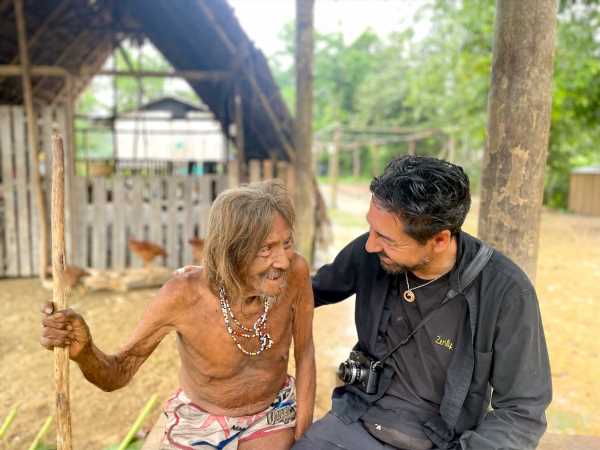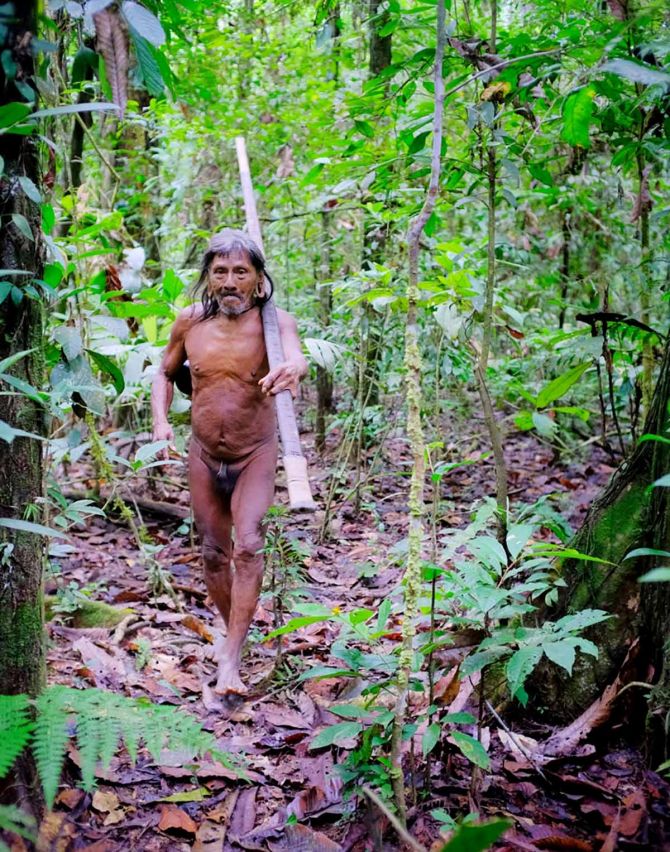Last year, Mary Raja, Arjun Panday and their 11-year-old son Leo woke up one morning in Paris and took the brave and inspired decision to travel around the globe.
Off they went, in September, careers on hold — he’s a software engineer and she works in banking — to conquer the world, Leo keeping up with his studies, long distance, on the road, when the maximum he could learn was unfolding around him because travel is the best teacher.
After many, many, wild bus, plane and boat rides, and a sojourn in the US and Central America, January found them in the heart of the Amazon jungle, far, far from the modern culture of plastic materialism, experiencing one of the greatest adventures of their lives in this steamy, tropical, remote, untamed and unforgettable corner of the earth, where the daily rhythms of life are how God planned them.
In Part I of their grand travelogue, Mary described how they reached into the deep Amazon of Ecuador on the Nepo river in the Yasuni National Park.
Now hear from Mary about their exciting days along the Nepo river.
In the afternoon we met the village elders. This included the shaman, Kempere and the next-in-line shaman Miniwa. Kempere is said to be 120 years old, but there are no records to prove this. The Woaranis are in contact with the outside world since the 1960s.
Under Kempere’s leadership the Woaranis kept the oil companies out with their poison arrows and spears. The Christian missionaries managed to find a way into the community through a Woarani woman. She even convinced Kempere to go live in the outside world as a ‘civilised’ human which meant wearing clothes which meant having money to pay for them which meant working to earn the money which meant being formally educated.
Kempere did go, but not for long. He came back and continued being the village shaman. Although the community is now in contact with the outside world and has a small school, there isn’t a church and they follow their beliefs.
We also met Kempere’s wife who has this radiant toothless smile. She is one of the most beautiful women I’ve seen.
The next day we left to hunt and fish with Wareka, Miniwa, Baewa and Ginto. We were joined by a German tourist called Dario. There were, of course, some kids who came along. It was a boat ride further down, where there is a monkey population.
As soon as we were on the shore, Miniwa and Baewa took off their clothes and put on the heavy wooden blowgun, the poison darts and cotton container around their necks.
The kids were the first to spot the monkeys. What followed was a chase which left us panting and heaving through the swamp, getting entangled in the vines and getting our foot stuck in the marshy soil.
At one point Dario couldn’t get out and I remembered a wildlife episode I had seen where you should lay sideways to get out. I suggested he do this and it worked! For once I felt useful in the jungle.
Most of the time I couldn’t see the monkeys, but Wareka and his team knew exactly where they were. They took aim and the first victim was a baby monkey. Apparently they were targetting the mother, who abandoned the baby and the baby got hit by the poison dart.
They proceeded to tie the monkey in a way that it could be carried like a handbag. Its hands felt like velvet. Much to his alarm, they gave the monkey to Leo so he could carry it. He reluctantly took the monkey to save face in front of the kids.
The second monkey was large and made us run a lot. We were out of breath by the time they got him. He fell from the tree and Baewa quickly strangled him. They then rubbed his body over theirs.
It was to ensure that the prey animals do not smell the predator. They stopped hunting as this was enough to feed everyone. The second big handbag was given to Arjun who clearly wasn’t at ease.
We then went fishing or rather the boys went fishing. Women are not expected to hunt and fish so I wasn’t given a rod.
The Woaranis caught a lot of catfish, Pajarito caught a piranha and Arjun caught a sardine. Arjun somehow managed to slip and fall in a bush of thorns and had them embedded in his palm. Arjun is, of course, a champion in the urban jungle!
The following day we spent time with everyone in the village. Arjun got all the thorns removed from his palm, by one of the women, except for one stubborn thorn. It looked like the beginning of an infection.
The women displayed some handicrafts and we were then invited to watch a traditional song and dance. Wareka’s father Guinto and three women performed the traditional dance. The women had some red paint around their eyes from the seeds of a fruit.
In the afternoon we left to see bright coloured parrots and macaws in a nearby forest. Guinto showed us a bush that had been trampled upon by a jaguar and then marks left by the claws of a jaguar on a tree. I nervously asked if it was likely that we’d see one. They weren’t very sure. That didn’t reassure me much.
We were shown several medicinal plants and then finally we reached the spot with slick mud. Our Wellington boots were stuck in them. We only saw one bird who flew away. It was too rainy for the birds to be there. Wareka mentioned that often anacondas hide in the mud with their heads out to catch their prey.
I quickly left the spot and walked briskly towards the forest. Once we were in the boat it started raining heavily and we were completely drenched in spite of our ponchos. Leo was in tears by the time we reached.
This was our last evening with the Waoranis. Leo played football with the kids and we turned in.
We woke up very early in the morning to see a large sequoia tree before bidding adieu to everyone in the village.
We reached El Coca after a 12-hour boat ride and a two-hour drive. We were happy to snuggle into the comfortable bed in our hotel room and dream of the jungle.
Source: Read Full Article








